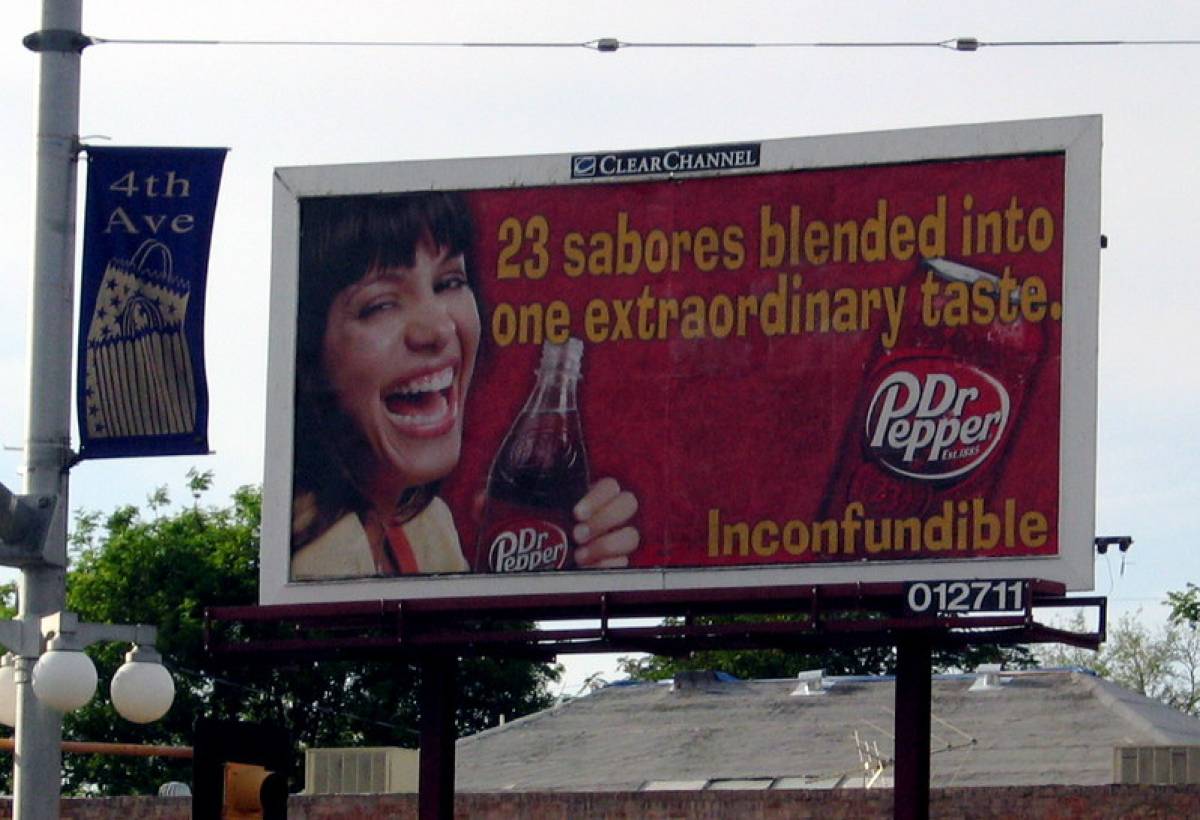Is Traditional Marketing Still Worth It?

Spanglish billboard example of traditional marketing: Photo: Steev Hise / Flickr.
Many businesses are striving to use digital marketing strategies to promote their products or services. But the question is whether businesses should still use traditional marketing in this digital age.
One things remains true... for a business to be successful, it needs to have a good marketing strategy – besides quality services or products, of course. Without proper marketing, you can’t sell your products or service as people won’t know you exist.
So, is traditional marketing still worth it today?
Traditional vs Digital Marketing
Traditional marketing is essentially every kind of marketing that is happening outside the digital world. Though one might wonder whether that kind of marketing can still work nowadays.
The biggest difference between traditional and digital marketing is that by using digital marketing, you can reach a very targeted audience. For example, paid ads on social media allow you to target a specific audience based on their age, stated interests, and behavior.
That said, if you look around, you will still see many forms of traditional marketing being used, such as newspaper ads and billboards. But the real question for many marketers and business owners is whether traditional marketing strategies are still effective for reaching their audience.
One thing to remember is that whichever marketing strategies you use, the goal is to get people who might want or need what you’re offering to see your marketing message. So, for example, if your target audience is people aged 65 and over, then traditional marketing might be the better choice because this group of people might not be tech savvy and always online like other demographics.
On the other hand, if your target audience is young people aged 18 to 29, then digital marketing is likely the better option because this group of people spends a lot of time online and are ‘digital natives.’ Digital marketing entails all the promotion methods we use online, encompassing paid ads, sponsored posts, email marketing, video ads, and others. It is a broad term with many marketing channels.
Effectiveness of Traditional Marketing Strategies
Brands have used traditional marketing strategies successfully throughout the past decades. Many of these strategies are still being used successfully today.
For example, TV commercials remain the base for traditional marketing. Even as audiences shift to digital media and savvy marketers pursue multichannel campaigns, television ranks as the second most effective and profitable advertising medium worldwide behind the internet, accounting for approximately 25% of total U.S. media ad revenue.
Brands willing to spend large amounts of money on ad campaigns for mass audiences, and that create TV ads that catch viewers’ attention and keep them engaged, score great returns on their investment. TV can still deliver great bang for your advertising buck.
Similarly, print ads that use text and graphics to promote a product or service are also popular and effective traditional marketing strategies today, as are billboards, which are huge outdoor marketing structures placed on busy roads. Billboards can reach up to 500 people an hour.
Moreover, other traditional marketing strategies like radio ads, flyers, and direct mail are still drawing significant audience attention for brands. For example, statistics show that 25% of listeners get more interested in a brand or its products after hearing about it on the radio.
Although online audio and podcasting audiences are growing rapidly today, the audience for terrestrial (AM/FM) radio remains high. 83% of Americans ages 12 or older listen to radio every week, according to Nielsen Media Research data published last year by the Radio Advertising Bureau.
Pros & Cons of Incorporating Traditional Marketing
Many brands opt to start with traditional marketing because their target audience is already familiar with those strategies - TV, radio, newspapers, and so on.
Traditional marketing strategies are also easy to deploy, considered credible, and can be used across many channels. For example, marketing strategies involving print can be easily distributed anywhere: in the street, restaurant, at the doctor’s, and so on.
Another great thing about traditional marketing is that it usually gets results and is cost-effective in the long-run. Traditional marketing is also adaptable and can help in shaping your brand image and identity. Besides that, it also has longevity, scalability, and bolsters customers’ trust.
On the other hand, a key disadvantage of traditional marketing is the lower ability to target narrow niche audiences within the general masses. Traditional marketing is also often not as measurable as digital marketing. You cannot really know how many people have seen your ad as is possible with digital marketing ads that incorporate accurate, real-time analytics.
On top of that, traditional marketing is often more costly upfront. Moreover, higher digital literacy nowadays can have negative effects on traditional marketing. This is because the proliferation of the internet and social media has produced a generation that is dependent on the internet and more likely to trust online sources than traditional marketing forms.
With all that being said, however, in this day and age, you may be better off merging both traditional and digital marketing strategies where possible for optimal results.
Merging Traditional and Digital Marketing Is Best
Ask yourself how each of those two marketing strategies can help you meet your needs. Then, move on to create solid marketing plans for both of those marketing methods.
For example, you can roll out an extensive content marketing campaign online and also run TV and radio ads, among other things. The key is considering both traditional and digital marketing strategies in relation to your business needs and your target audience personas.
Do not completely ignore traditional marketing. Instead, have a vision and plan, and aim to create a balanced strategy that combines both those marketing strategies successfully. The results are better.




















